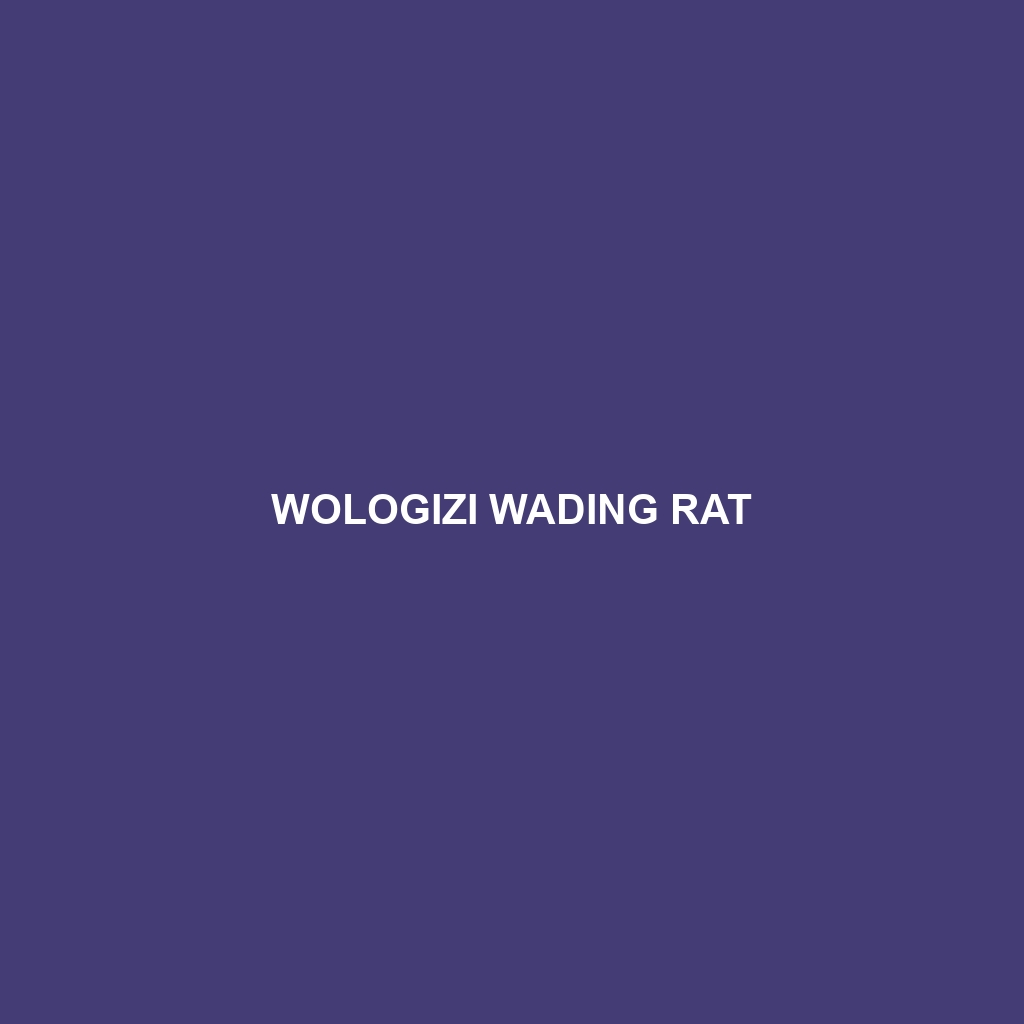Wologizi Wading Rat: A Unique Species
Common Name: Wologizi Wading Rat
Scientific Name:
Habitat
The Wologizi Wading Rat is primarily found in the wetlands and marshes of the Wologizi Mountains in Liberia. This species thrives in humid environments characterized by dense vegetation and shallow waters. The unique ecosystem of this geographic location provides an ideal habitat, offering ample cover and food sources necessary for survival.
Physical Characteristics
Wologizi Wading Rats are medium-sized rodents, typically measuring about 25 to 35 centimeters in length, excluding the tail. They feature a coarse fur coat that ranges from brown to grey, enabling them to blend seamlessly into their natural surroundings. Their elongated bodies, short legs, and webbed feet are distinctive characteristics that facilitate wading through water. The large, round eyes are well-adapted for low light conditions, essential for their feeding behavior at dawn and dusk.
Behavior
These rodents are primarily nocturnal, showcasing social behavior in small family groups. The Wologizi Wading Rat is known for its agile movements and adept swimming skills, often foraging in water for food. Their vocalizations, including chirps and whistles, are essential for communication within their groups. Understanding the behavior of this species is crucial for researchers studying their adaptation to environmental changes.
Diet
The Wologizi Wading Rat has an omnivorous diet that consists mainly of aquatic plants, seeds, and small invertebrates. They forage in water during the night, using their sensitive whiskers to detect food sources. The diet predominantly includes roots and tubers, which are abundant in their wetland habitat. This feeding behavior supports their growth and reproductive success while influencing the dynamics of the ecosystem.
Reproduction
Wologizi Wading Rats breed throughout the year, with peak activity observed during the rainy season. Females typically give birth to litters of 3 to 5 offspring after a gestation period of approximately 30 days. The young are born blind and rely on their mother’s care for several weeks before becoming independent. The nurturing behavior exhibited by the females plays a vital role in the survival of the species.
Conservation Status
Currently, the Wologizi Wading Rat is classified as vulnerable due to habitat destruction and environmental changes. Conservation efforts are crucial to protect their wetland habitats from agricultural encroachment and pollution. Raising awareness about the ecological significance of this species can contribute to its conservation.
Interesting Facts
– The Wologizi Wading Rat has a unique adaptation of webbed feet, which allow for efficient swimming in shallow waters.
– They are known to construct nests from reeds and grass, providing shelter and protection for their young.
– Their ability to thrive in wetland environments makes them indicators of ecosystem health, highlighting the importance of preserving their habitat.
Role in Ecosystem
The Wologizi Wading Rat plays a significant role in its ecosystem by assisting in the dispersal of seeds and contributing to the nutrient cycle within wetland environments. As both herbivores and prey, they are integral to the food chain, interacting with various species, including birds and larger mammals. The conservation of the Wologizi Wading Rat is essential to maintaining the ecological balance of their habitat.
